2024 Top Manufacturers
Companies take a holistic approach to their business as they invest in processes, people and products while keeping an eye on a market challenged by inflation and affordability concerns
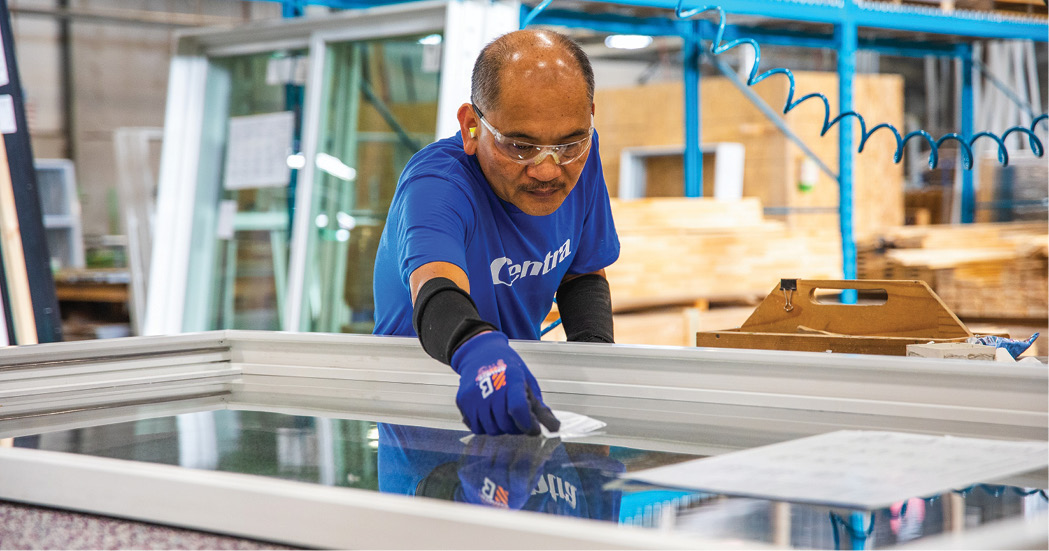
Photo courtesy of Centra Windows
Inflation, affordability and rising costs in materials and labor appear to be the biggest challenges for companies as they navigate the current economic climate, according to Window + Door’s 2024 Top Manufacturers Report. Market and production expansion, as well as energy efficiency, are driving companies’ growth, and many report those sectors to be among their biggest business opportunities this year. Once again, the market shows that despite some big challenges, residential fenestration manufacturers continue to focus on, and take advantage of, opportunities.
This year’s Top Manufacturers Report examines the construction, building and manufacturing industries at large before diving into insights from the statistics provided by residential fenestration manufacturers, compiled using data from a survey companies completed in March of this year.
The 2024 Top Manufacturers Report
- The Big Picture
New home construction, remodeling and manufacturing outlooks - The Residential Fenestration Market
Market conditions, sales, production, product trends, labor, automation - The Top Manufacturers Index + List
North America’s largest manufacturers of residential windows, doors, skylights and related products, based on sales volume
The May/June Digital Issue
More details about each of the 2024 Top Manufacturers on the List are available in the May/June digital issue of Window + Door Magazine.
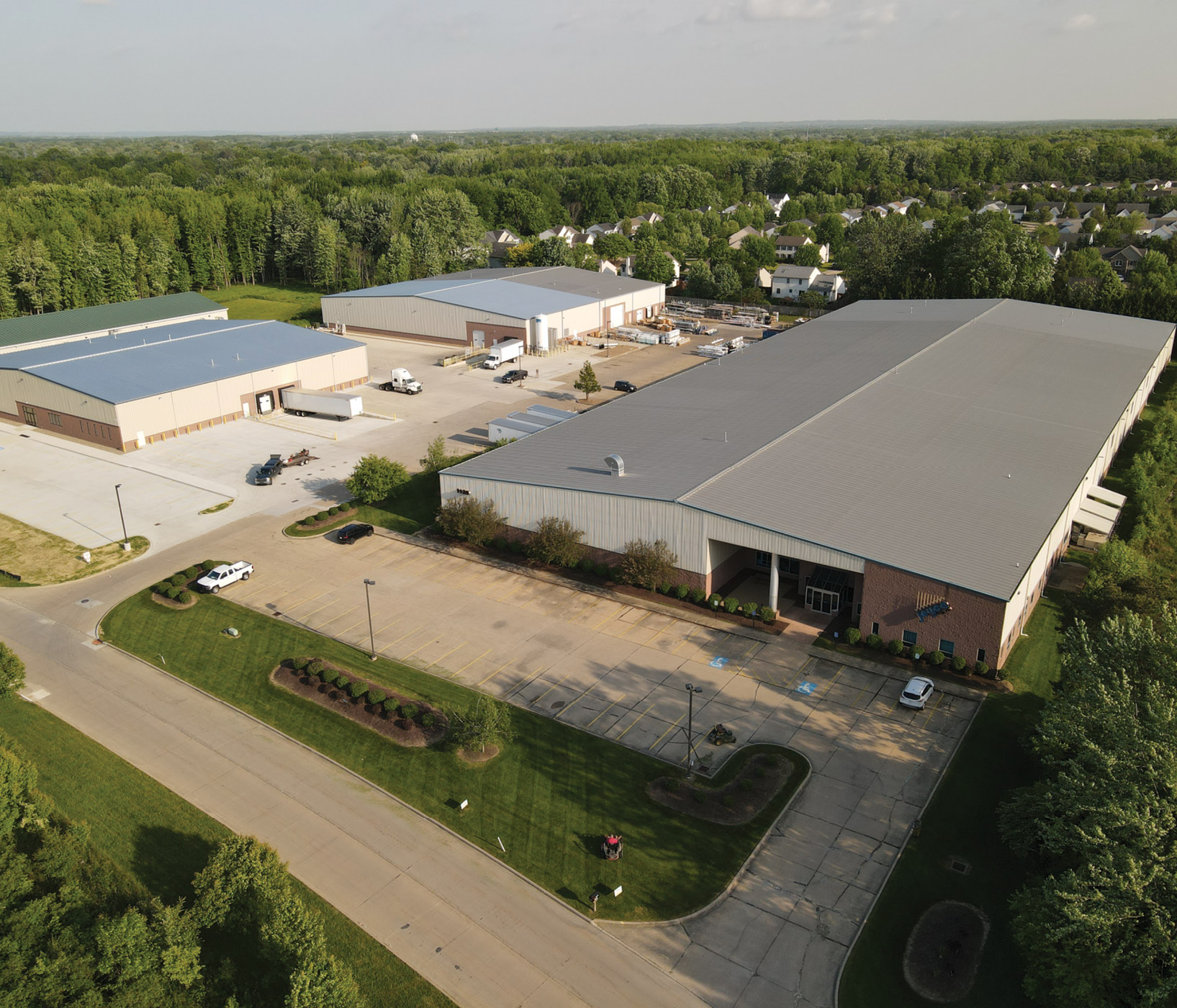
Photo courtesy of Joyce Manufacturing
The Big Picture
The fenestration supply chain is a robust one and necessitates keeping abreast of the latest macroeconomic trends, plus trends within our industry, including single-family new construction, repair and renovation, and manufacturing itself.
New construction
The latter half of 2023 saw decreased builder confidence and housing starts, according to data from the National Association of Home Builders, the U.S. Department of Housing and Urban Development, and the U.S. Census Bureau.
This year had a strong start, but the ups and downs continue. February new home sales were up 5.9% year over year, according to data from HUD and the Census Bureau. Overall housing starts increased 10.7% in February; single-family marked a 11.6% increase and are up 35.2% compared to a year ago. The multifamily sector increased 8.3%.
March, however, saw declining numbers again. Overall housing starts decreased 14.7% in March and single-family homes under construction decreased 2.7% compared to a year ago.
“Single-family starts were down in March as interest rates increased and multifamily production fell as builders faced tighter financing conditions,” says Danushka Nanayakkara-Skillington, assistant vice president for forecasting and analysis, National Association of Home Builders. “And with single-family permits also down in March, single-family production will likely decline again in April.”
The median price of new homes in 2023 was down 6% compared to 2022, which the NAHB attributes to builders cutting home prices and building slightly smaller homes. In fact, analysis shows new homes built in 2023 are at their smallest size in 13 years; more than a quarter plan to construct even smaller this year.
Remodeling
The remodeling market is a mixed bag. NAHB forecasts stable remodeling spending in 2024, which the Remodeling Market Index score of 66 reflects. (Any score above 50 is in positive territory.) “Demand for remodeling remains solid, especially among customers who don’t need to finance their projects at current interest rates,” says NAHB Remodelers Chair Mike Pressgrove. “Construction costs are still an issue in some places, just as they were toward the end of last year.”
Meanwhile, the Leading Indicator of Remodeling Activity from the Joint Center for Housing Studies of Harvard University anticipates annual expenditures for improvements and repairs to owner-occupied homes will decrease this year and into the first quarter of 2025. JCHS, however, projects the decreases will be at a moderating rate with homeowner spending declining by over 7% in the third quarter of this year before easing to just -2.6% through the first quarter of 2025.
“Residential remodeling is expected to benefit from the rebounding housing market and stabilizing material costs as we move into next year,” says Carlos Martín, director of the Remodeling Futures Program at JCHS. “While home improvement and repair spending is down from pandemic-induced highs, the nation's aging homes continue to need investment in critical replacements, home performance deficiencies, as well as modernization.”
Manufacturing
Nearly 40% of manufacturers pulled back on hiring and investing due to increased taxes, according to the National Association of Manufacturers Q1 2024 Manufacturers’ Outlook Survey.
About 94% of respondents indicated the importance of the federal tax code reducing manufacturers’ costs for conducting R&D, accessing capital via business loans, and investing in capital equipment purchases. The survey indicated 68.7% of respondents felt somewhat or very positive about their company’s outlook, marking the sixth consecutive reading below the historical average of 74.8%.
Also of note from the survey was nearly two-thirds reporting an inability to attract and retain employees. Other notable headwinds include an unfavorable business climate, rising health care and insurance costs, a weaker domestic economy and weaker sales for manufactured products.
The Residential Fenestration Market
The Window and Door Market Index
John Burns Research and Consulting and Window + Door partnered to create the Window and Door Market Survey, which captures timely market developments and insights from residential fenestration manufacturers. Respondents for the Q4 2023 survey represent an estimated 40% of residential industry volume.
Companies increased average revenues by +3.8% year over year, a deceleration from the +7.2% year over year reported in Q3 2023, but still growth compared to the continued realization of price increases implemented in late 2022.
The Window and Door Market Index Rating of 43.5 out of 100 indicates that window and door companies’ industry sentiment is normal. All three subcomponents of the index showed contraction.
*Subcomponents of the window and door index include next quarter expected revenue, volume changes for window and door shipments/ installations, and demand for window and door products and services.
43.5/100
Window and Door Market Index Rating, indicating that window and door companies’ industry sentiment is normal. All three subcomponents* of the index showed contraction.
Key takeaways from the most recent Window and Door Market Survey
Takeaways include:
- Companies are gearing up for growth in 2024. Commentary suggests a need to pivot from taking orders, which was a focus over the past three years, to creating demand. Companies expect to reignite brand loyalty with homeowners, contractors and dealers. JBREC expects demand to materially improve throughout 2024.
- Companies see reduced backlogs from improved supply chain performance. All companies say most of their active projects are on schedule and 44% of companies report projects take less time to complete than the year prior. Respondents did note, however, delays in imports from Asia due to disruptions in the Middle East affecting cargo shipments.
- Companies report persistent material and labor inflation. Input costs for material and labor continue to rise and they also cite the need to increase staff pay as the U.S. labor market remains tight.
- Most companies plan to raise prices in 2024. Window and door companies believe they have significant pricing power with end customers, as evidenced by 61% planning to raise prices by 4.5% on average in 2024. In 2023, however, prices remained relatively flat following accelerated price increases in 2022. Companies say these increases are necessary to maintain margins as they feel the effects of material and labor inflation and higher import shipping costs.
Sales, Growth
71%
Experienced measurable, significant growth in the past five years due to demand in new and remodel projects, increased market share, expanding into new areas, acquisitions, increased production, and new products.
94%
Added production capacity in 2023: extra shifts, expanded facilities, machinery, streamlined processes, additional production and office staff.
54%
Report higher 2023 gross sales compare to 2022 gross sales, while 25% report unchanged y-o-y sales.
56% of window and door companies reported YOY volumes declining in Q4 2023. Average volumes across all companies were flat YOY. Conversely, 50% reported YOY revenue growth in Q4 2023 and +3.8% YOY. Source: John Burns Research and Consulting
Most companies (slightly over 50%) reported higher gross sales in 2023 compared to 2022. About three-quarters added production capacity last year, too.
Data from JBREC indicates similar demand conditions for residential products in single-family new construction, single-family repair and remodel, and multifamily. Demand for multifamily products is slightly higher than in the past three years, but demand likely will decline as many multifamily units near completion in early 2024. JBREC expects single-family new construction and repair and remodel to improve later this year due to expected interest rate declines.
The sales landscape continues to evolve. One company, whose 2023 sales were about double as their 2021 sales, shared, “While overall demand has slowed down, the demand for our high-performing products has been growing. We are optimistic the overall market will make a rebound in the next few months with interest rates stabilizing. We anticipate double-digit increase in 2025.”
Other respondents echoed similar sentiments about an overall demand reduction, but those that are investing in the space are after high-performance products. Most high-end luxury products appear to be insulated from economic hardship. Others view a possible slowdown as yet another opportunity. “We have measures in place to adjust our production and staff as necessary to maintain profit margins,” writes one respondent. “We see this downtime as an opportunity to focus on more innovation.”
Several note the importance of looking at statistics, including how permits turn into starts and how the real estate market is performing.
Challenges, Opportunities
35% of window and door companies do not expect an impact from the Inflation Reduction Act tax credits for homeowners; 24% think it will provide a tailwind for their business, with 6% indicating it will be “very impactful.” Source: JBREC
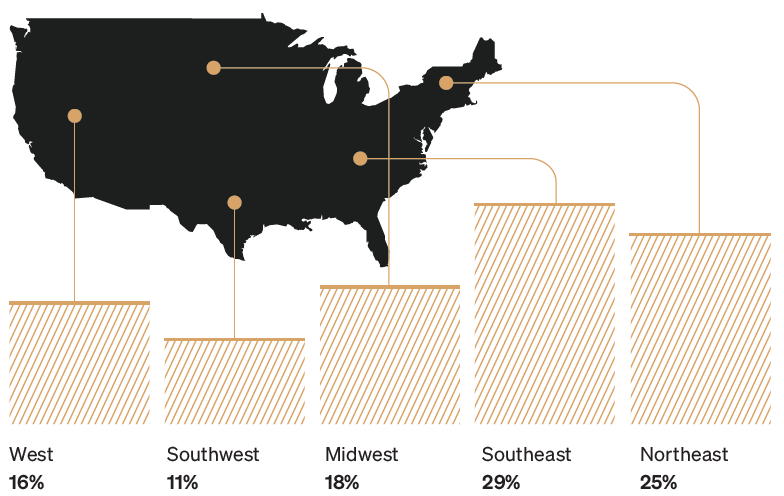
Respondents to this year’s survey provided ample insight as to headwinds. “The window production industry is expected to face a number of major headwinds in 2024, including rising costs of raw materials, shifting consumer preferences, global supply chain disruptions, and increased competition,” writes one respondent.
“Companies will need to be proactive in addressing these challenges and finding ways to adapt to the changing market landscape in order to remain competitive and successful in the years to come.”
One respondent references the rapid advancement of technology and consumer preferences. “Staying ahead demands constant innovation and adapting our designs to meet new market trends, requiring significant investment in R&D and a flexible approach to development.”
“I think we’re past the material inflation challenges, and have been for several years,” writes another respondent. “Those that still have challenges won’t be able to recoup those costs. Now, we see deflation in our product categories. Interest rates and availability of excess cash or loans to start projects are challenges. I think we’ll see deferred decisions to buy a home and deferred maintenance on higher-cost items like millwork.”
Much of the data and commentary collected this year echoes the challenges of home affordability, both for buying a new or used home and for embarking on higher-dollar projects such as window and door replacements.
Companies continue to focus on big business opportunities and taking a holistic view. “A 360-degree focus on employees, supply chain and customers creates partnerships that make it possible to pivot to take advantage of new opportunities,” writes one respondent.
Other notable opportunities include energy efficiency, acquisitions, growing existing customers, increased capacity, and expanding facilities and product lines.

Products
84% Updated, plan to update, or had already met guidelines for Energy Star certification. 16% are letting their certification lapse.
Vinyl windows and patio doors remain the overwhelming market leaders, according to the report. The top-requested features remain unchanged from last year’s report, with energy-efficient products, larger windows and doors, and color as the most requested.
Energy Star Version 7.0’s implementation last October has upped the ante on what products qualify as Energy Star rated, especially at the top level. Nearly all companies are updating, plan to update or have products that already meet the new requirements. Triple pane and fourth-surface low-E are the top technologies companies use to up the efficiency, but plenty of other technologies are in action, as shown above.
“One of the biggest business opportunities in window production lies in the development and manufacturing of energy-efficient windows,” writes one survey respondent. “By investing in the research and development of innovative window technologies, companies can create a competitive advantage in the market and attract environmentally conscious customers.
“Another significant opportunity in window production is the customization of windows to meet specific customer needs and preferences,” they continue. “Furthermore, the rise of smart home technology presents a promising opportunity for businesses in the window production industry. By partnering with technology companies and investing in the development of smart window solutions, manufacturers can tap into a growing market segment and align their products with the latest technological trends.”
Energy Star is still the dominant certification, but some pursue other certifications, too, including Passive House, Living Building Challenge and impact ratings.
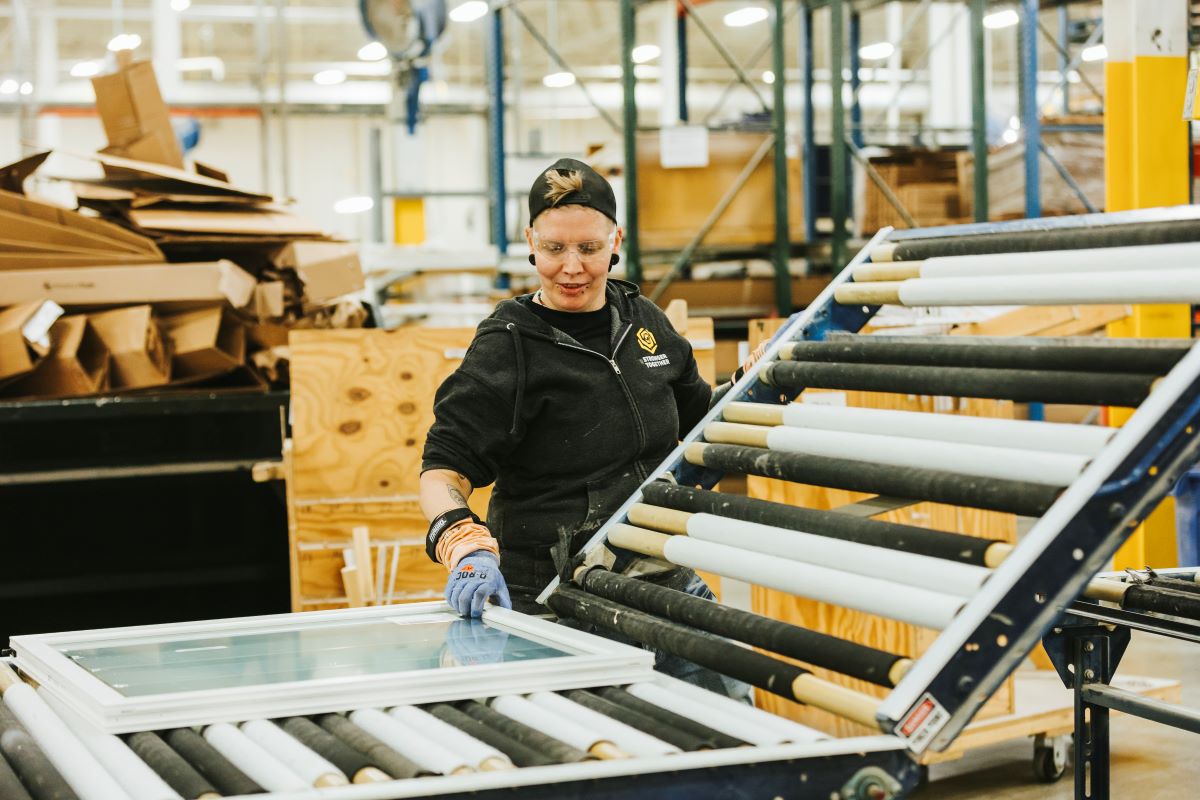
Labor
21%
Report more difficulty finding workers in 2023, compared to 50% in 2022
91%
Plan to hire new workers in 2024
34%
Recruitment is biggest labor challenge
7% YOY increase in direct labor costs. Source: JBREC
Recruitment is the top challenge around labor, followed by retention, training and wage expansion, all of which respondents cited as being equally difficult.
Qualified installers, manufacturing floor labor and more are feeling the impact of the labor shortage. Several companies note the fierce competition to retract and retain labor in their markets. Other commentary from this year’s survey noted the challenge of keeping new employees engaged and motivated.
“Language barriers and cognitive load can be challenging for team members learning a new role,” writes a respondent. “We’ve implemented several [English as a second language] initiatives to bridge the gap in communication and we’ve also implemented voice-to-pick technology to help production team members more easily navigate process for custom products.”
Transferring knowledge from retiring employees with decades of experience to employees in training is also a challenge. Those same workers were often the trainers and it’s imperative that companies formalize and document their knowledge so that it can be passed on to new workers.
Diversity: Biggest Training Challenge, Greatest Asset
“Our biggest challenge in training new employees is also one of our greatest assets: the diversity of our workforce. Our team comprises individuals from a multitude of countries, creating a rich tapestry of cultural and linguistic backgrounds. This, however, brings forth certain hurdles, particularly in the realms of language, communication and metric-to-imperial conversion.
“In addressing these challenges, we have implemented an extended onboarding program that provides ample time for training on fundamental tasks, such as reading a tape measure, and understanding their practical application in daily duties. While we are yet to overcome the language barrier entirely, we have made significant strides in this direction. Our training instructors are proficient in English, Spanish, French and Creole, ensuring effective dissemination of critical start-up information to most of our staff.
“These instructors maintain a supportive and continuous relationship with the new hires and their leaders during the initial 30 days of employment. It’s essential to remember that for some, this job may signify their first venture into manufacturing, their first job in general or their first work experience in this country. We view these circumstances not as hurdles, but as opportunities for growth, adaptation and fostering an inclusive work environment. We believe that our diverse workforce is our strength, providing us with unique perspectives and approaches that drive our success in the manufacturing industry.”
Supply Chain and Materials
50%
companies are experiencing increased demand compared to last year. The 28% that are not seeing increased demand cite an “expected decline after the COVID boom,” a slowing economy and market uncertainty. The remaining 22% are unsure.
67%
of companies experienced material price increases last year. Price increases averaged 9.6%. Although the majority of companies are experiencing price increases, this figure is significantly lower than last year’s recording of 99% indicating price increases, with many companies noting increases of up to 30%.
63%
of window and door companies report reduced backlogs in Q4 2023 versus Q4 2022. 25% report increasing backlogs.
4% YOY increase in material input costs increased. Source: JBREC
“With rising material costs, rising labor costs and inflation, we have no choice but to increase our prices if we wish to retain the same level of quality, performance and customer service.”
Automation and Technology
81%
of respondents include automation in their factory. Automation’s biggest benefits include increased quality, increased output, cost and labor savings, and safety benefits.
68%
plan to add automation in the next year. 24% are unsure. Anticipated equipment includes welding equipment, robotics for fabrication and assembly processes, IG fabrication, glazing tables, material handling, CNC, screen machines, cleaners and more.
75%
75% of companies do IG production in-house.
63% of companies have other in-house operations. Other in-house operations include extruding, profile laminating, laminating, pultruding, part and IG fabrication, painting/staining, tempering, roll forming, and powder coating.
40% of companies use artificial intelligence in their business. Of those that are leveraging AI, one company is exploring use cases related to process and schedule optimization, vision systems with AI learning and large language model chatbots for training. Other AI uses include marketing campaigns, service tickets, cameras to detect employee performance and adherence to safety standards, and website chatbots.
Top Manufacturers Index
Compiled by Rachel Vitello
*Sales not confirmed by company
More than $1 Billion

- Andersen Windows & Doors
- Associated Materials
- Cornerstone Building Brands *
- Jeld-Wen
- Marvin
- Masonite
- Miter Brands
- Pella
- PGT Innovations
- Velux *
- Wintegra Windows Inc. *
$500 million to $1 billion
$300 million to $500 million
- Harvey Building Products*
- Novatech*
- ODL
- Sierra Pacific Windows*
- Steves & Sons Inc.*
- Woodgrain Millwork*
$200 million to $300 million
- Champion*
- Fenplast inc.
- Kolbe & Kolbe Millwork Co.*
- Polaris Windows and Doors*
- Quaker Windows and Doors
- Trimlite
- United Window & Door
- Weather Shield Mfg.*
$100 Million to $200 Million
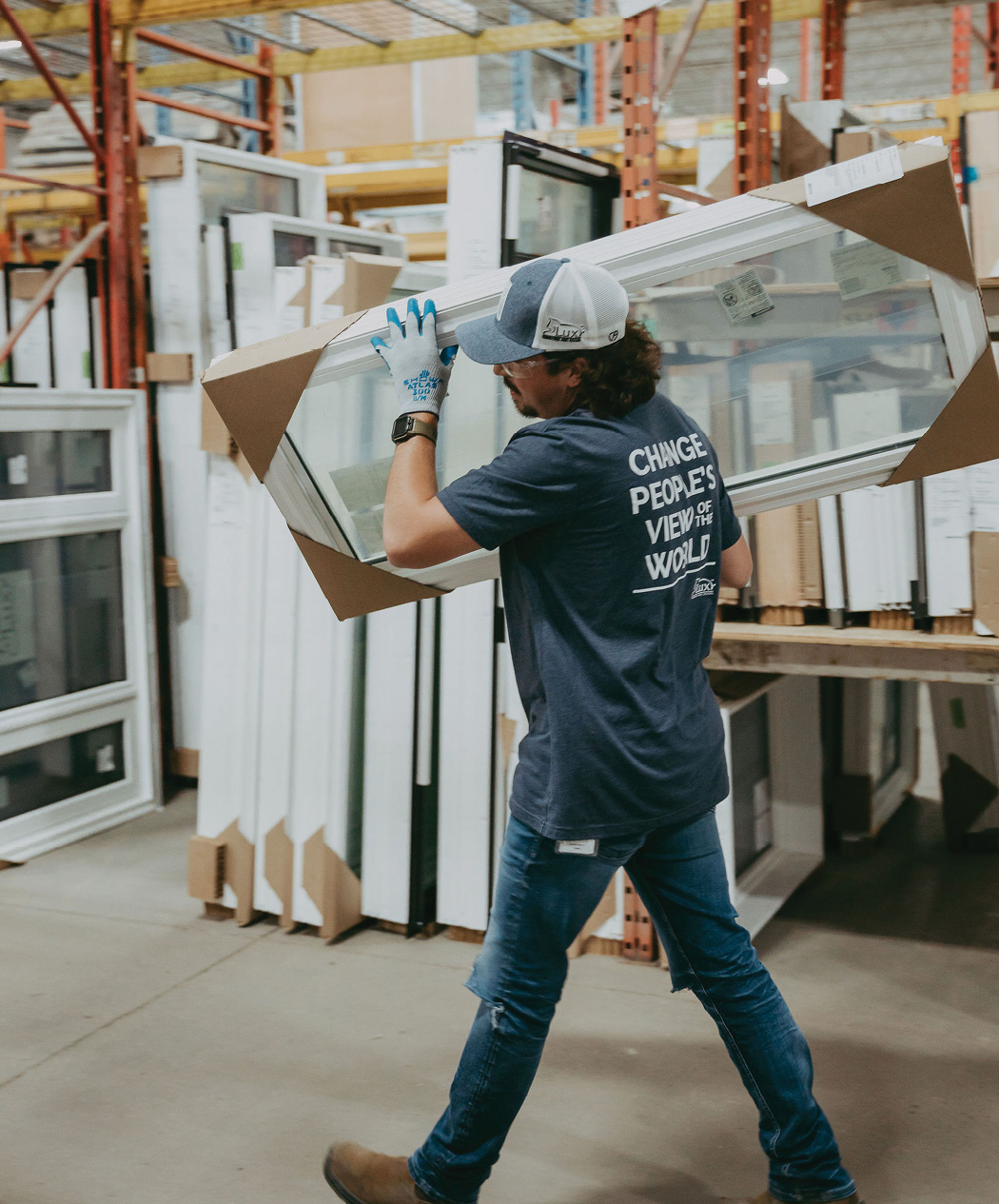
- All Weather Window*
- Boral Window*
- Crystal Window & Door Systems
- Durabuilt Windows & Doors
- Earthwise Group, LLC
- Elevate Windows and Doors
- Lincoln Windows & Patio Doors
- Lindsay Windows
- Loewen Windows and Doors
- Lux Windows and Doors
- Midway Windows and Doors
- Plastpro
- Trinity Glass International*
- Viwinco Inc.
- Wallside Windows
- Wincore Windows and Doors
- Window Designs Group*
$75 Million to $100 Million
- Air Master Windows and Doors
- Arcadia Custom*
- Centra Windows
- OpenView Products, LLC
- Regal Aluminum Windows & Doors
- Simpson Door Company
- Skyline Windows
- Thompson Creek Window Co.*
- Vinylmax Windows
- ViWinTech Window & Door Inc.*
- Window Mart*
$50 Million to $75 Million
- Builders FirstSource*
- Castle Windows*
- Conservation Windows*
- Gerkin Windows and Doors
- LePage Millwork*
- Mathews Brothers Co.
- MGM Industries
- Northeast Windows USA, INC.
- NT Window Inc.
- Premium Windows*
- Vytex Windows
$40 Million to $50 Million
- ATI Windows*
- Croft LLC*
- FrontLine Bldg. Products Inc.
- GlassCraft Door Co.
- Hope's Windows Inc.*
- International Window
- Okna Windows Manufacturing*
- Solaris International*
- Sun Windows Inc.
- The Coeur d’Alene Window Company
$30 Million to $40 Million
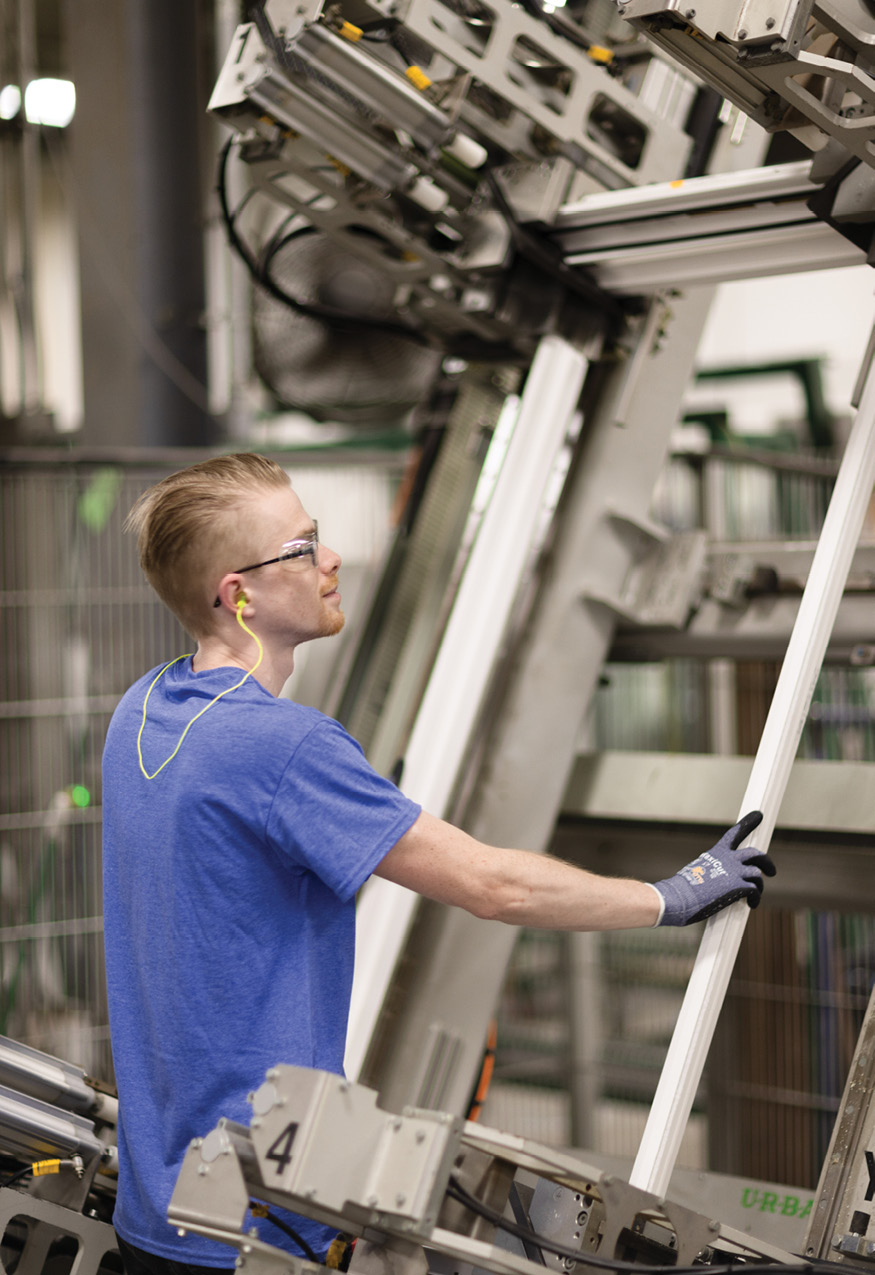
- All Weather Architectural Aluminum*
- Comfort View Products
- Gilkey Window
- Innotech Windows + Doors
- Interstate Window & Door Co.
- Joyce Manufacturing Company
- Slocomb Windows and Doors, Inc.
- Stanley Doors*
- Taylor Entrance Systems*
- Vector Windows & Doors
$20 Million to $30 Million
- EuroLine Windows Inc.
- Everlast Group of Companies*
- Ideal Window Manufacturing
- Inline Fiberglass Ltd.*
- Madero
- Moss Supply Co.*
- Vinyl Kraft Inc.*
- Winchester Industries
$15 Million to $20 Million
- Alpen High Performance Products
- Ikon Windows LLC
- Kensington HPP Inc.
- Thermal Windows Inc.
- Upstate Door
Less than $15 Million
- Aurora Doors & Windows
- Climate Solutions Windows & Doors
- Glass Rite
- Prestige Entries
- Seaway Mfg. Corp.
- Stewart Brannen Millworks
The Top Manufacturers List
The full Top Manufacturers list details North America’s largest manufacturers of residential windows, doors, skylights and related products, based on sales volume. The list includes more information about product lines and is available in the May/June issue of Window + Door Magazine.



